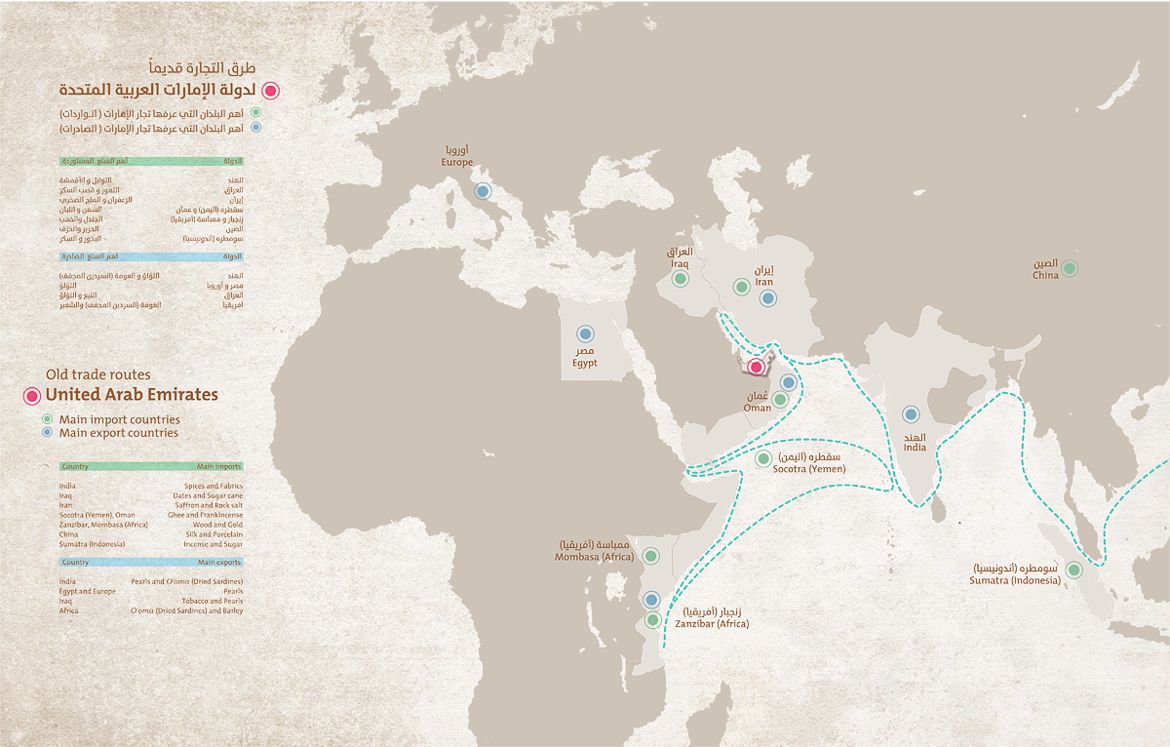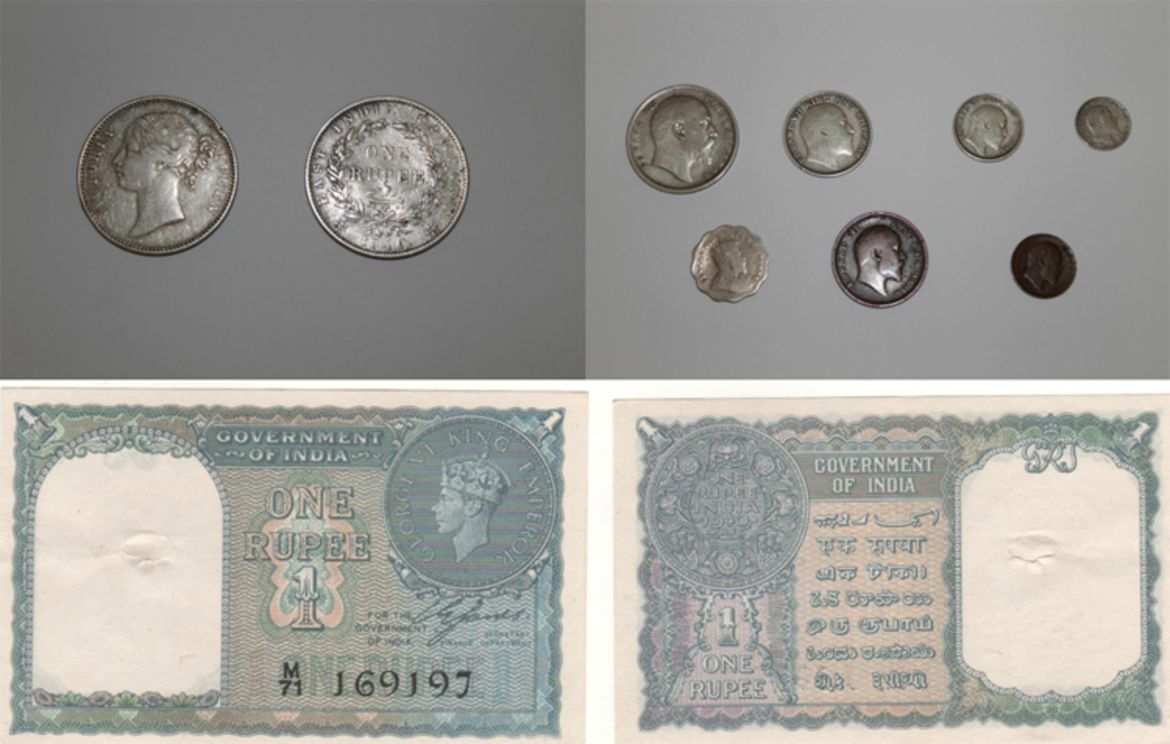Later copper coins were minted in Lanja in 1247 H (1831 AD) and were known as Marduf Al Qawassim. They were used in the regions of this area ruled by the Qawassim family—Sharjah, Ras Al Khaimah, Kalba, Khorfakkan and Dibba. The Omani Paisa, or Bargash Paisa, was also used around this time; the paisa was made from cooper and used in the region from 1299 to 1316 H (1881 to 1898 AD). Earlier, Sultan Faisal bin Turki coins were minted in Zanzibar in 1313 H (1895 AD) and used in the Gulf and along the Persian coast; at the time, the area was ruled by Oman. Even earlier, Sultan Burgos coins were minted in Zanzibar in 1299 H and distributed within the East African countries before brought to Oman and the rest of the Gulf by the Portuguese.
“What happened in the rest of the world with currency happened here. We were connected via the ancient trade routes and so when a particular currency became a popular trade unit, it became popular here. How important a coin was depended on the metals from which it was made and how trustworthy was the value of the coin. Even back then there was counterfeit and tampered with currency. For instance, those teethed ridges along the rim of the coins were added so that one knew if there is something inconsistent with the ridges then a coin has been tampered with.”
Al Mutairi explained the stories of coins produced even earlier than the Sultan Burgos coins. The area began, he says, "like the rest of the world, using Greek coins." The drachma, in both silver and copper, was in widespread use in the region in the first century AD and is thought to have been the origin of the word "dirham." Excavations across the UAE have traced the use of coins to as far back as the 4th century BC, when the first to be found in the area - imitations of Athenian examples - were struck.
Some of these coins were found at Mleiha, 50km east of Sharjah city, and el-Dur, in Umm al Qaiwain. At Mleiha, a large settlement that predated the Christian era by three centuries, the ruler Abi'el introduced some of the first mould-made coins in the ancient Middle East.
The coins minted locally have a name added to them in Aramaic. It is "Abi’el," the daughter of so and so, giving rise to speculation that perhaps ed-Dur was a kingdom once run by a woman. The name Abi’el was added to imitations of imitations of common coins, a practice attributed to the first century AD. These feature the head of Heracles, or Hercules, wearing the pelt of the Nemean lion on the obverse (with a dot like a wart on his cheek) and on the reverse an enthroned, partially nude male figure or god (Zeus or a sun-god), with a horse or horse-protome, rather than the more common eagle, printed on its outstretched arm.
There is also a three-fluked anchor or trident and palm tree depicted on some coins, linking them to the sun god, as palm wood or branches were burnt around the ed-Dur temple. The horse also has associations with the sun god, giving further evidence to the site’s Shams/Shamash-cult past.
The el-Dur site also yielded examples of foreign coinage from India, Iran and Mesopotamia - all evidence of historic trading contacts. Examples of ancient coins can be found in museums across the UAE. They also appeared as stamps to highlight their historic importance.






















